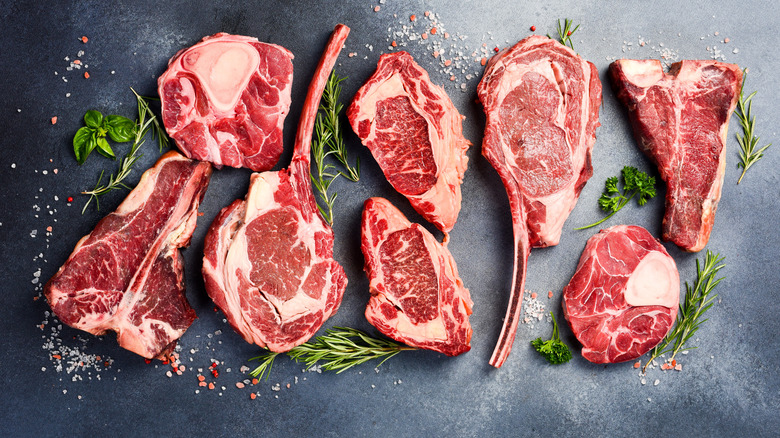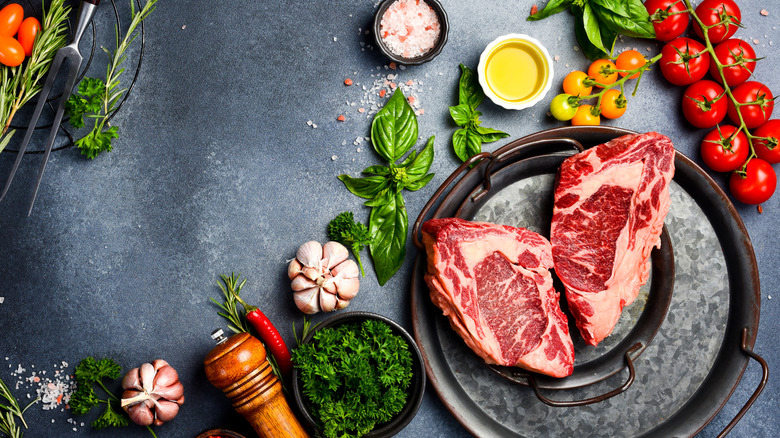The Biggest Difference Between Ribeye And New York Strip Steak
When it comes to selecting a superior choice of steak, the ribeye and the New York strip often rise handily to the top of the list. Two things influence the flavor of these cuts of meat: the fat pattern and the muscle content. If you want the most luscious bite, then you had best look at the fat distribution in a particular cut of meat.
That's because fat greatly influences the flavor of beef and, because it typically melts somewhat during cooking, it effectively marinates the meat as it cooks. Precisely how that fat impacts the taste will depend upon where the meat is located on the animal ... and where the fat lies in the cut itself. The muscles on a cow contain both intramuscular and intermuscular fat. The first one is found inside the muscles and is the most desirable, as it gives the meat a tender texture. The latter type of fat is between and around muscles. Intermuscular fat is chewy and is usually discarded by diners as part of the dreaded gristle. As for our cuts of steak, New York strip is typically lean and contains little intramuscular fat, while ribeye is full of it and more tender as a result.
How does the fat differ between strip steaks and ribeyes?
New York strip steak comes from the short loin of a cow— a muscle that's hardly utilized by the animal. The large fat cap that forms in the area creates a cut of meat that is lean and very tender, but a little tougher due to a lack of marbling. New York strip steaks are excellent seared at a high temperature and served on the rarer side. You may also wish to look into some chef-approved tips for achieving juicy steak.
Ribeyes are highly marbled cuts of steak, taken from the ninth through eleventh ribs of the cow, or the upper portion of the back. This is the same area that prime rib comes from, making it clearer why a ribeye is a more expensive cut of meat.
When it comes to taste, ribeyes — presuming they're cooking properly — are incredibly juicy with a melt-in-your-mouth feel. The flavor is more pronounced and is excellent when grilled, especially when you take care of temperatures with a two-zone method. A New York strip steak will be chewier and offer a more beefy, less fatty bite.

